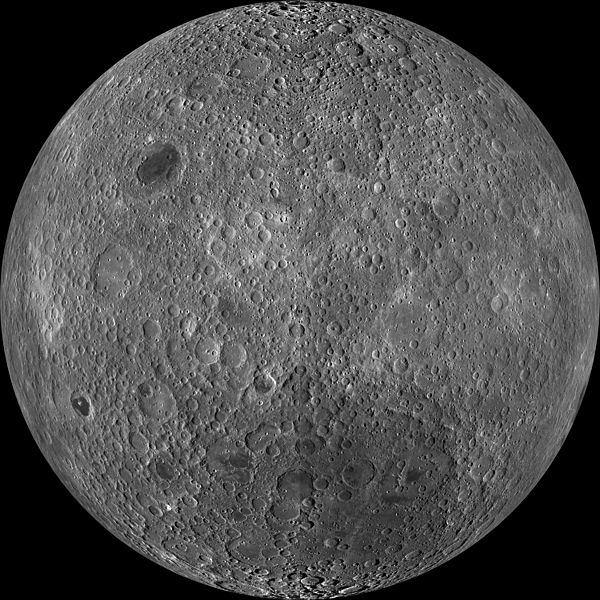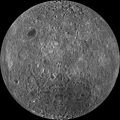Figure:Moon Farside LRO.jpg

Dimension di cheste anteprime: 600 × 600 pixels. Altris risoluzions: 240 × 240 pixels | 480 × 480 pixels | 768 × 768 pixels | 1 024 × 1 024 pixels | 2 048 × 2 048 pixels | 18 000 × 18 000 pixels.
Risoluzion plene (18 000 × 18 000 pixel, dimensions: 85,34 MB, gjenar MIME: image/jpeg)
Storic dal file
Frache suntune date/ore par viodi il file cemût che al jere in chel moment.
| Date/Ore | Miniature | Dimensions | Utent | Coment | |
|---|---|---|---|---|---|
| atuâl | 20 di Mar 2014 a lis 00:47 |  | 18 000 × 18 000 (85,34 MB) | Huntster | High resolution mosaic. |
| 9 di Avr 2011 a lis 05:12 |  | 1 600 × 1 600 (1,44 MB) | Bubba73 | {{Information |Description ={{en|1=Far side of the Moon, by NASA's Lunar Recon. Orbiter}} |Source =http://apod.nasa.gov/apod/image/1104/farside_lro1600.jpg |Author =NASA - LRO |Date =2011? |Permission = |other_versions = } |
Ûs dal file
No son vôs leadis a chest file.
ûs globâl dal file
Chestis altris vichis a doprin chest file:
- Ûs in af.wikipedia.org
- Ûs in az.wikipedia.org
- Ûs in be.wikipedia.org
- Ûs in bjn.wikipedia.org
- Ûs in bn.wikipedia.org
- Ûs in bs.wikipedia.org
- Ûs in ca.wikipedia.org
- Ûs in cs.wikipedia.org
- Ûs in de.wikipedia.org
- Ûs in en.wikipedia.org
- Ûs in en.wikibooks.org
- Ûs in en.wikiversity.org
- Solar System, technical/Moon
- User:Marshallsumter/Radiation astronomy2/Visuals
- Draft:Original research/Planets
- User:Marshallsumter/Radiation astronomy2/Visuals/Quiz
- User:Marshallsumter/Rocks/Rocky objects/Astronomy
- User:Marshallsumter/Radiation astronomy/Courses/Principles/Hourly 2
- User:Marshallsumter/Radiation astronomy/Courses/Principles/Midterm quiz
- User:Marshallsumter/Radiation astronomy/Courses/Principles/Final quiz
- Titan/Quiz
- User:Marshallsumter/Rocks/Rocky objects
- Draft:Enceladus/Quiz
- Moon/Quiz
- Stars/Sun/Heliology/Quiz
- Earth/Quiz
- Stars/Reds/Quiz
- Draft:Dione/Quiz
- User:Marshallsumter/Radiation astronomy2/Scattered disks/Quiz
- User:Marshallsumter/Radiation astronomy1/Kuiper belts/Quiz
- Liquids/Liquid objects/Moon
- User:Marshallsumter/Radiation astronomy/Craters
- Ûs in es.wikipedia.org
Mostrel'ûs globâl di chest file.

